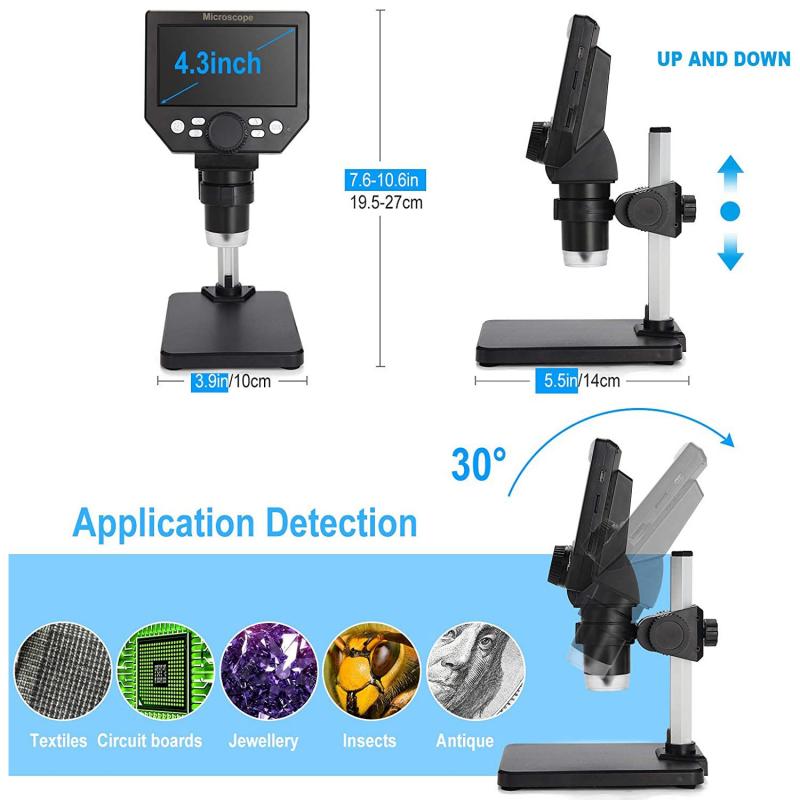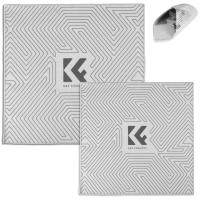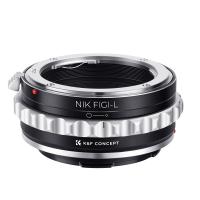Phase Contrast Microscope How It Works ?
A phase contrast microscope is an optical microscope technique used to enhance the contrast of transparent or semi-transparent specimens. It works by exploiting the differences in the refractive index and thickness of different parts of the specimen.
In a phase contrast microscope, a special condenser with an annular diaphragm is used to create a hollow cone of light. This cone of light passes through the specimen and interacts with its different parts. The light waves passing through regions with different refractive indices and thicknesses are shifted in phase to varying degrees.
After passing through the specimen, the light waves are recombined with a reference beam of light, resulting in interference. This interference produces variations in intensity, which are then converted into contrast in the final image.
The phase contrast microscope allows for the visualization of transparent or unstained specimens, such as living cells, without the need for additional staining techniques. It is widely used in biological research and medical diagnostics to observe cellular structures and processes.
1、 Principles of phase contrast microscopy
The phase contrast microscope is an essential tool in biological research and clinical diagnostics as it allows for the visualization of transparent and unstained specimens. It works on the principle of exploiting the differences in the refractive index of different parts of a specimen to create contrast and enhance visibility.
The basic setup of a phase contrast microscope involves the addition of a phase plate to the condenser and an annular diaphragm to the objective lens. The phase plate is a transparent disc with a small central aperture, while the annular diaphragm is a ring-shaped stop that blocks the direct light from entering the objective lens.
When light passes through a specimen, it encounters regions with different refractive indices. These variations cause a phase shift in the light waves passing through the specimen. In a phase contrast microscope, the phase plate and annular diaphragm work together to convert these phase shifts into intensity differences.
The annular diaphragm blocks the direct light, allowing only the diffracted light to pass through. This diffracted light interacts with the phase plate, which further delays the light waves passing through the specimen. As a result, the light waves that pass through regions with higher refractive indices are delayed more than those passing through regions with lower refractive indices.
When the delayed and undelayed light waves recombine, they interfere with each other, creating a phase contrast image. This image reveals the subtle variations in refractive index within the specimen, making it possible to observe transparent structures such as cells, organelles, and other fine details.
In recent years, advancements in phase contrast microscopy have led to the development of new techniques such as quantitative phase imaging (QPI). QPI allows for the measurement of the optical path length of light passing through a specimen, providing quantitative information about cellular structures and dynamics. This has opened up new avenues for studying live cells and their behavior in real-time.
Overall, the phase contrast microscope is a powerful tool that enables researchers and clinicians to visualize transparent specimens with high contrast and resolution. Its principles have been refined and expanded upon, leading to the development of advanced techniques that continue to push the boundaries of biological imaging.

2、 Interference of light waves in phase contrast microscopy
Phase contrast microscopy is a powerful technique used to visualize transparent and unstained samples, such as living cells, with high contrast. It works by exploiting the interference of light waves to enhance the visibility of subtle variations in refractive index within the sample.
In a phase contrast microscope, a special condenser is used to convert the phase differences in the light passing through the sample into intensity differences that can be detected by the human eye or a camera. This is achieved through the use of a phase plate, which is inserted into the condenser. The phase plate consists of a transparent annular ring with a phase shift of 180 degrees, surrounded by a clear region. The phase shift causes a phase difference between the direct and diffracted light passing through the sample.
When the light passes through the sample, the regions with different refractive indices cause a phase shift in the light waves. The direct light passing through the clear regions of the sample remains in phase, while the diffracted light passing through the regions with variations in refractive index experiences a phase shift. As a result, the direct and diffracted light waves interfere with each other, leading to a change in intensity.
The phase plate in the condenser converts the phase differences into intensity differences. The direct light passing through the clear region of the phase plate remains unchanged, while the diffracted light passing through the phase plate experiences a phase shift of 180 degrees. This phase shift causes destructive interference, resulting in a reduction in intensity. The interference pattern is then observed as variations in brightness, enhancing the contrast of the sample.
Recent advancements in phase contrast microscopy include the development of quantitative phase imaging techniques, which allow for the measurement of the optical path length of the light passing through the sample. This provides valuable information about the refractive index and thickness of the sample, enabling the study of cellular dynamics and other biological processes in a label-free manner. Additionally, digital phase contrast microscopy has emerged, which combines phase contrast imaging with computational algorithms to further enhance the contrast and resolution of the images.
In conclusion, phase contrast microscopy utilizes the interference of light waves to enhance the visibility of transparent samples. By converting phase differences into intensity differences, this technique allows for the visualization of subtle variations in refractive index within the sample. Ongoing advancements in phase contrast microscopy continue to improve its capabilities, enabling a deeper understanding of biological processes at the cellular level.

3、 Phase plate and its role in phase contrast microscopy
The phase contrast microscope is a powerful tool used in biological research to visualize transparent and unstained samples. It works by exploiting the differences in the refractive index of different parts of a specimen to create contrast and enhance visibility.
The key component of a phase contrast microscope is the phase plate, which is inserted into the condenser or objective lens. The phase plate consists of a transparent material with a specific thickness and refractive index. It introduces a phase shift to the light passing through it, which is dependent on the refractive index variations in the specimen.
When light passes through a transparent specimen, it undergoes a phase shift due to the differences in refractive index between the specimen and the surrounding medium. This phase shift is usually too small to be detected by the human eye. However, the phase plate amplifies this phase shift, converting it into intensity differences that can be observed.
The phase plate achieves this by creating interference between the direct and diffracted light waves passing through the specimen. The interference causes some areas of the specimen to appear brighter, while others appear darker, creating contrast and revealing fine details.
The role of the phase plate in phase contrast microscopy is crucial as it enables the visualization of transparent samples without the need for staining or labeling. This is particularly useful in live cell imaging, where staining can interfere with cell viability and dynamics.
In recent years, advancements in phase contrast microscopy have focused on improving the resolution and sensitivity of the technique. Techniques such as quantitative phase imaging and digital holography have been developed to provide quantitative information about the refractive index distribution within a specimen. These advancements have opened up new possibilities for studying cellular processes and have contributed to the understanding of various biological phenomena.
Overall, the phase plate plays a vital role in phase contrast microscopy by enhancing contrast and enabling the visualization of transparent samples. Ongoing advancements in the field continue to improve the technique, making it an invaluable tool in biological research.

4、 Optical path difference and its effect in phase contrast microscopy
The phase contrast microscope is a powerful tool used in biological research to visualize transparent and unstained samples. It works by exploiting the optical path difference (OPD) between the light passing through different regions of the sample.
In a phase contrast microscope, a special condenser is used to convert the phase differences into intensity differences, making them visible to the observer. This is achieved by splitting the light into two paths: the direct path and the diffracted path. The direct path passes through the sample without interacting with it, while the diffracted path interacts with the sample and undergoes a phase shift.
The phase shift occurs because the refractive index of the sample is different from that of the surrounding medium. This phase shift is directly proportional to the OPD, which is the difference in the optical path length between the direct and diffracted paths. The phase contrast microscope uses a phase plate, located in the objective lens, to convert the phase shift into intensity differences.
The phase plate consists of a transparent ring with a phase shift of 180 degrees. This causes the light passing through the direct path to be in phase, while the light passing through the diffracted path is out of phase. When these two beams recombine, they interfere with each other, resulting in a phase contrast image.
The latest point of view in phase contrast microscopy is the development of advanced techniques, such as quantitative phase imaging (QPI). QPI allows for the measurement of the phase shift with high precision, enabling the quantification of cellular properties, such as dry mass, volume, and refractive index. This has opened up new avenues for studying cellular dynamics and processes at the nanoscale level.
In conclusion, the phase contrast microscope works by utilizing the OPD and converting it into intensity differences through the use of a phase plate. This technique has revolutionized the field of microscopy, allowing for the visualization of transparent samples and providing valuable insights into cellular structures and dynamics. The latest advancements in phase contrast microscopy, such as QPI, have further enhanced its capabilities and expanded its applications in biological research.







































